- Home
- Report of Delicious Sake Serving Restaurants, My Three Meals, taito
- Big dinner of Dandan Noodles with Tosatsuru at “Asakusa Seimenjo”
Big dinner of Dandan Noodles with Tosatsuru at “Asakusa Seimenjo”
- 2018/6/4
- 1 comment
Good evening.
Thank you very much for reading this blog.
Today is about “Asakusa Seimenjo” in Asakusa.
On that day, a lady who is working with me treated me a meal for the celebration of my promotion at “Roppongi MUN” which I introduced in a previous blog.
She was the only person who celebrated me….
Anyway, I usually don’t eat or drink much when I’m with someone else because I can enjoy enough by chatting. However, after leaving “MUN” and my colleague, I started to want some food and drink. So I visited this “Asakusa Seimenjo” alone before going home.
This is the menu.
They had Nihonshu, but it didn’t say which labels of sake they had. I should’ve had whiskey and soda considering my health, but I ordered this Nihonshu to check which label.
It was already poured in a small glass, so I couldn’t see the label.
I asked a staff, and she brought me the bottle.
I didn’t take a picture of it, but it was “Honkaku Karakuchi Tosatsuru”.
It is classified in light and dry, non-premium sake, but it’s actually a good one which has rich flavor and clear taste.
It went nice with the salty taste of boiled soybeans.
The beans were not enough to fill up my stomach, so I ordered other dishes.
Every time I come to Ramen noodles restaurant, I order gyoza (Jiaozi, Chinese dumpling).
Usual Ramen restaurants serve a set of 5 to 6 gyoza, but I could choose 3 at this restaurant.
Because the menu said that it’s “special”, I ordered kara-age (Japanese deep-fried chicken) too.
Kara-age was also available from 1 piece.
When I was younger, cheap and big was good, but as I got older, now I eat less, and such small serve has become very useful.
It should be less efficient in the points of sales and production if they serve small quantities each for a restaurant. However, this restaurant does a good job trying to be more useful for customers.
I tried the gyoza and kara-age.
The gyoza was what I call “Takoyaki style”. (takoyaki is a Japanese snack, something like octopus dough balls.) That means the main vegetable ingredient was cabbage.
“Takoyaki style” gyoza is a sort of gyoza which tastes like takoyaki. In this case, takoyaki is what I usually had in my hometown when I was younger, and it’s not like “Gindako” (a famous takoyaki chain store) takoyaki.
The familiar takoyaki for me was often sold at stands in front of supermarkets or in event places. I remember the ingredients were cabbage and Japanese red pickled ginger.
According to my analysis, gyoza usually contains minced meat, and normal cabbage or Chinese cabbage as the main ingredients. If it’s normal cabbage gyoza, the taste depends on the size of cabbage flakes. If the cabbage flakes are bigger, or the ginger is more, the “takoyaki label” becomes high…… I think.
The gyoza of this restaurant was low “takoyaki label”, and probably because the rate of meat was high, it contained a lot of juice which made it very delicious.
And kara-age.
It was freshly cooked and still very hot and crispy. It tasted of garlic a lot which should be great with beer or whisky and soda.
Tosatsuru, beans, gyoza, and kara-age were enough to fill up my stomach, but I thought that ordering no ramen noodles is not appropriate at a ramen restaurant, so I decided to order noodles at last.
“Kama-age” was also attractive, but I chose “Tantan dipping noodles” because the menu said that it was their recommend.
There were 3 colors of the noodles; white, red, and green. I chose green which herbs called Ashitaba is mixed in because it was unique.
Usually, I order extra-large, or I could have done all-you-can-eat
Which was shown on the board outside. But I had had enough by then, so I ordered a normal size.
The noodles were really green.
I tried it immediately.
The noodles were not too soft or hard, and went through my throat smoothly.
I couldn’t tell the taste of the herb…maybe I didn’t have good sense of taste.
It should have been different from normal noodles, but I couldn’t tell exactly what was different.
It was dipping noodles, so there was a bowl of soup for dipping.
The soup tasted of sesame, and the thickness and hot taste were just right.
It was a kind of soup that makes you eat more than you think when it got together with the noodles.
But in my case, considering my health,
No another bowl of noodles.
I had many dishes, but I felt that I had just enough.
This restaurant provides all-you-can-eat to big eaters, and small quantities to small eaters. They are so flexible to entertain various customers.
As I mentioned, preparing different quantities should be bothersome for restaurants. I thought that this restaurant is a good one who is trying to be useful for the customers not only in the point of quality, but also the service.
Such restaurants make the customer want to come back again.
I’d like to come again after my condition gets better.
It’s our great pleasure if this article is helpful for you.

Comment (0)
No trackbacks yet.


















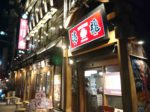

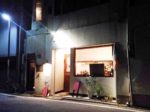
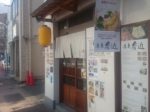

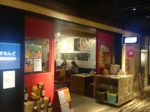
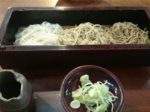
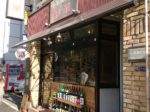
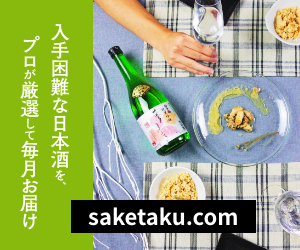
No comments yet.